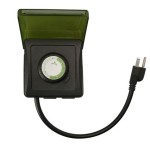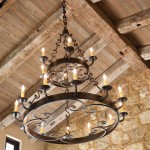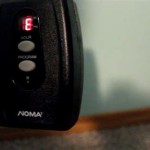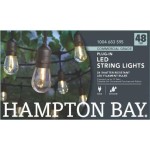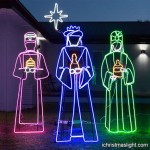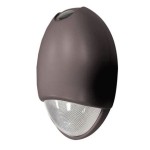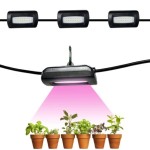Outdoor Lighted Sign Panels: Illuminating Businesses and Brands
Outdoor lighted sign panels represent a crucial element in a business's overall marketing and branding strategy. They serve as a beacon, attracting attention, conveying information, and creating a lasting impression on potential customers. Unlike static, unilluminated signage, lighted panels offer enhanced visibility, particularly during nighttime hours and in low-light conditions, thereby extending a business's advertising reach around the clock. The design, construction, and strategic placement of these panels play a significant role in their effectiveness, influencing brand recognition and ultimately impacting sales.
The effectiveness of an outdoor lighted sign panel is multifaceted, encompassing several key considerations. Material selection, lighting technology, design aesthetics, and regulatory compliance all contribute to the overall impact and longevity of the sign. A poorly designed or constructed sign can detract from a business's image, while a well-executed panel can significantly enhance brand perception and drive customer traffic. Therefore, a thorough understanding of the various aspects involved in creating and implementing these signs is essential for businesses seeking to maximize their marketing investment.
Durability and Material Considerations
Selecting the appropriate materials for outdoor lighted sign panels is paramount to ensure their durability and longevity, especially considering the exposure to various environmental elements. These elements include sunlight, rain, wind, and temperature fluctuations, all of which can degrade the sign's appearance and structural integrity over time. The choice of materials directly impacts the sign's resistance to fading, cracking, warping, and corrosion.
Common materials utilized in the construction of outdoor lighted sign panels include aluminum, acrylic, polycarbonate, and various types of coated metals. Aluminum, known for its lightweight yet robust properties, is often used for the sign's frame and backing. It is naturally resistant to corrosion and can be further protected with powder coating or anodizing for enhanced durability. Acrylic, a transparent thermoplastic polymer, is widely used for the sign face due to its excellent light transmission properties and resistance to yellowing. Polycarbonate, another type of thermoplastic, offers superior impact resistance compared to acrylic, making it suitable for areas prone to vandalism or extreme weather conditions.
The selection of the substrate material behind the sign face is also critical. A solid, weather-resistant backing material is necessary to provide structural support and prevent moisture intrusion. Common options include aluminum composite material (ACM), which consists of a polyethylene core sandwiched between two layers of aluminum, and durable plastics designed for outdoor use. These materials are chosen for their ability to withstand the elements without warping, rotting, or corroding.
Furthermore, the choice of inks and coatings used for printing or painting the graphics on the sign face is essential for long-term color retention and resistance to fading. UV-resistant inks and clear coats are often applied to protect the graphics from the damaging effects of sunlight, ensuring that the sign's message remains vibrant and legible for years to come. The overall quality of the materials and construction techniques directly influences the sign's lifespan and its ability to maintain its aesthetic appeal under various environmental conditions.
Illumination Technologies: From Neon to LED
The evolution of illumination technologies has significantly impacted the design and performance of outdoor lighted sign panels. Historically, neon lighting was a prevalent choice due to its bright, vibrant colors and ability to be shaped into intricate designs. However, neon lighting is relatively energy-inefficient, requires high-voltage power supplies, and can be fragile. Over time, fluorescent lighting emerged as a more energy-efficient alternative, offering brighter illumination and longer lifespans compared to neon.
Today, Light Emitting Diode (LED) technology has largely replaced both neon and fluorescent lighting in outdoor lighted sign panels. LEDs offer numerous advantages, including significantly lower energy consumption, longer lifespans, reduced maintenance requirements, and greater design flexibility. LEDs are also more environmentally friendly, as they do not contain harmful substances like mercury, which is present in fluorescent lamps.
LEDs provide a wide range of color options and brightness levels, allowing for precise control over the sign's illumination and visual impact. They can be easily integrated into various sign designs, including channel letters, lightbox signs, and illuminated billboards. Furthermore, LEDs can be programmed to create dynamic lighting effects, such as flashing, fading, and color-changing sequences, further enhancing the sign's ability to attract attention. The lower power consumption of LEDs translates into lower operating costs for businesses, making them a cost-effective and sustainable lighting solution for outdoor signage.
The placement of the lighting within the sign panel is just as crucial as the type of lighting used. Backlighting, where the light source is positioned behind the sign face, creates a uniform glow that illuminates the entire message. Edge-lighting, where the light source is positioned along the edges of the sign face, produces a more subtle and sophisticated effect, highlighting the sign's contours and details. The choice of lighting placement depends on the desired aesthetic and the specific design of the sign.
Design and Regulatory Considerations
The design of an outdoor lighted sign panel must effectively communicate the business's message while adhering to local regulations and ordinances. The sign's design should be visually appealing, easy to read, and consistent with the business's overall branding. Factors such as font size, color combinations, and graphic elements all contribute to the sign's readability and impact.
Clarity and legibility are paramount, especially when designing signs that will be viewed from a distance or while in motion. Using a clear and concise font, with sufficient contrast between the text and background colors, ensures that the message is easily understood. Avoiding overly complex or cluttered designs helps to maintain the sign's visual clarity and prevent it from overwhelming viewers.
Local zoning ordinances and sign regulations often dictate specific requirements for outdoor signage, including size limitations, height restrictions, setback requirements, and allowable lighting levels. Before installing a new sign or modifying an existing one, businesses must obtain the necessary permits from their local government agencies. Failure to comply with these regulations can result in fines, penalties, and even the removal of the sign.
In addition to local regulations, businesses must also consider accessibility requirements, such as those outlined in the Americans with Disabilities Act (ADA). ADA guidelines specify requirements for signage that ensures it is accessible to individuals with disabilities, including those with visual impairments. This may include requirements for tactile characters, accessible sign placement, and adequate contrast between the sign's text and background. Compliance with these regulations demonstrates a commitment to inclusivity and ensures that the sign is accessible to all members of the community.
Beyond regulatory compliance, the sign's design should also consider the surrounding environment and the overall aesthetic of the building or location where it will be installed. The sign should complement the building's architecture and contribute to the overall visual harmony of the area. A well-designed sign can enhance the appearance of a building and create a positive impression on potential customers, while a poorly designed sign can detract from the area's overall aesthetic.
Furthermore, the sign's design should be adaptable to changes in branding or marketing messages. Modular sign systems allow for easy replacement of the sign face or individual components, enabling businesses to update their messaging without having to replace the entire sign. This flexibility can be particularly valuable for businesses that frequently run promotions or need to update their information. The overall design should maximize visibility while maintaining compliance, brand consistency, and aesthetic appeal.
Routine maintenance is crucial for preserving the appearance and functionality of outdoor lighted sign panels. Periodic cleaning removes dirt, dust, and grime that can accumulate on the sign face, reducing its brightness and clarity. Regular inspections can identify potential issues, such as loose connections, damaged components, or water leaks, allowing for prompt repairs and preventing further damage. Replacing worn-out or malfunctioning lighting elements ensures that the sign remains brightly illuminated and effectively attracts attention. Investing in a preventative maintenance program can significantly extend the lifespan of the sign and minimize costly repairs in the long run. Proper maintenance not only preserves the sign's appearance but also ensures its ongoing safety and compliance with local regulations.
By carefully considering these factors, businesses can create outdoor lighted sign panels that effectively communicate their message, enhance their brand image, and attract customers. The strategic investment in high-quality signage is a crucial component of a successful marketing strategy, particularly in competitive business environments. This allows for businesses to stand out and remain recognizable.

Exterior Outdoor Lighted Signs Impact

Exterior Outdoor Lighted Signs Impact

5 Things You Should Know About Custom Light Box Signs

What Are The Diffe Types Of Lighted Signs Here Our Top 5 Dave S
Outdoor Light Box Signs

Outdoor Backlit Signs Metal Letter Producer Is Led Sign Factory

Outdoor Backlit Signs Metal Letter Producer Is Led Sign Factory

Acrylic Led Light Box Sign Outdoor Illuminated Signage Lindo

Exterior Outdoor Lighted Signs Impact

Outdoor Backlit Signs Metal Letter Producer Is Led Sign Factory
Related Posts
